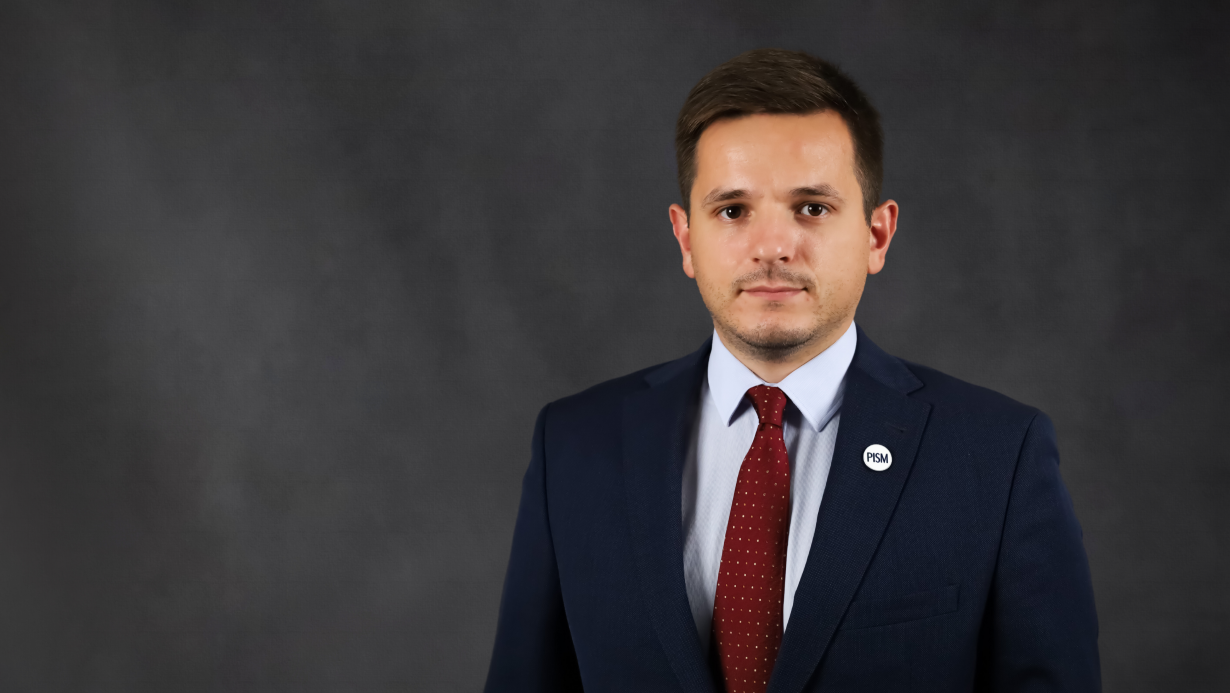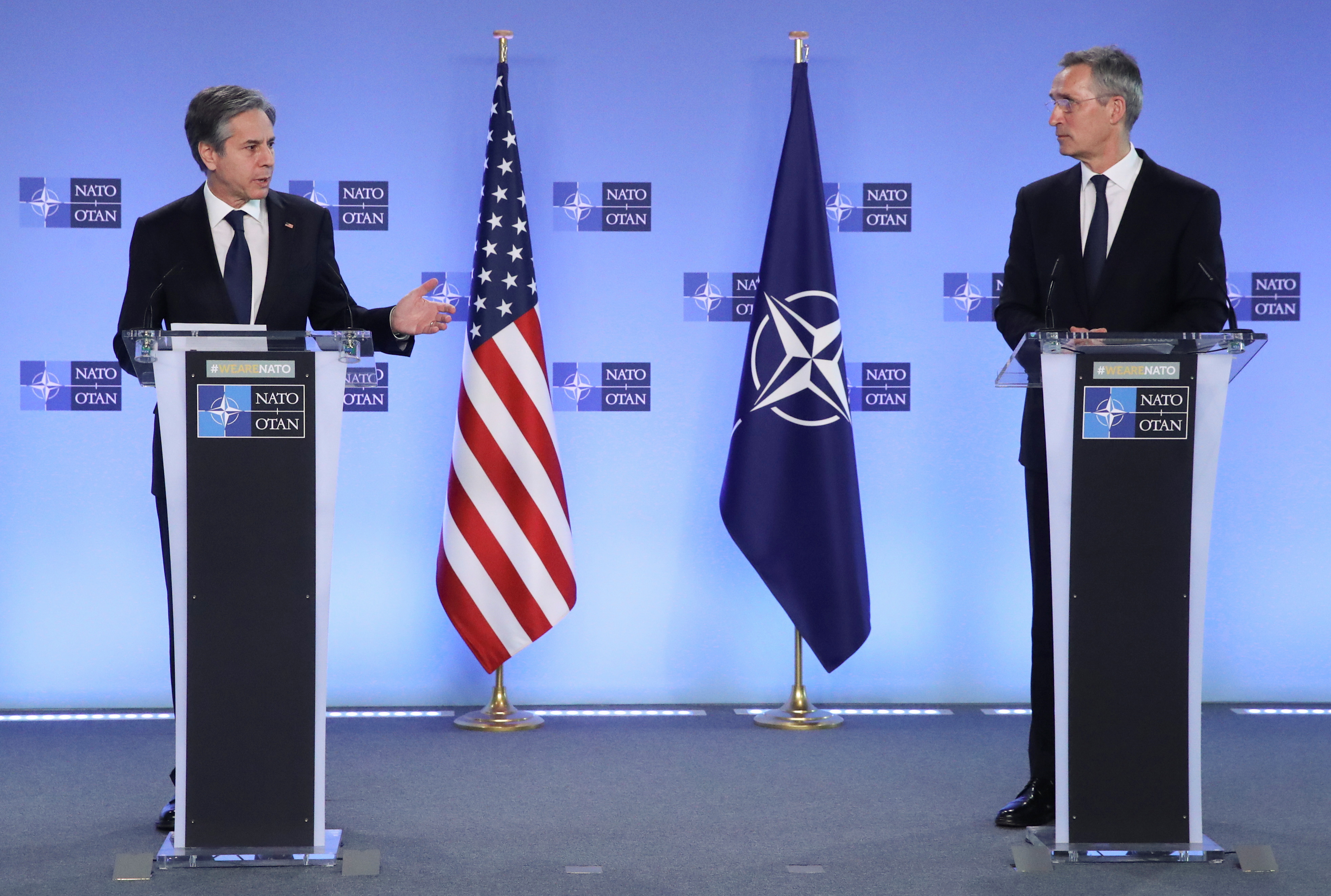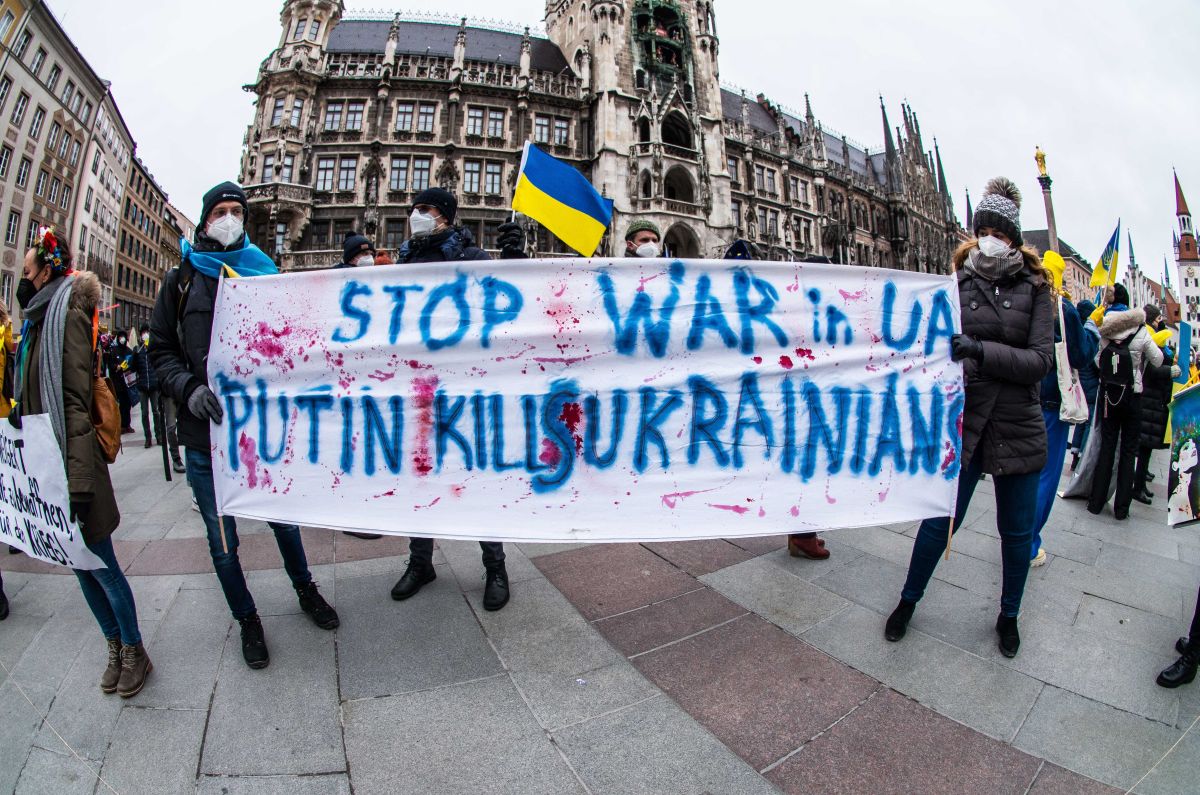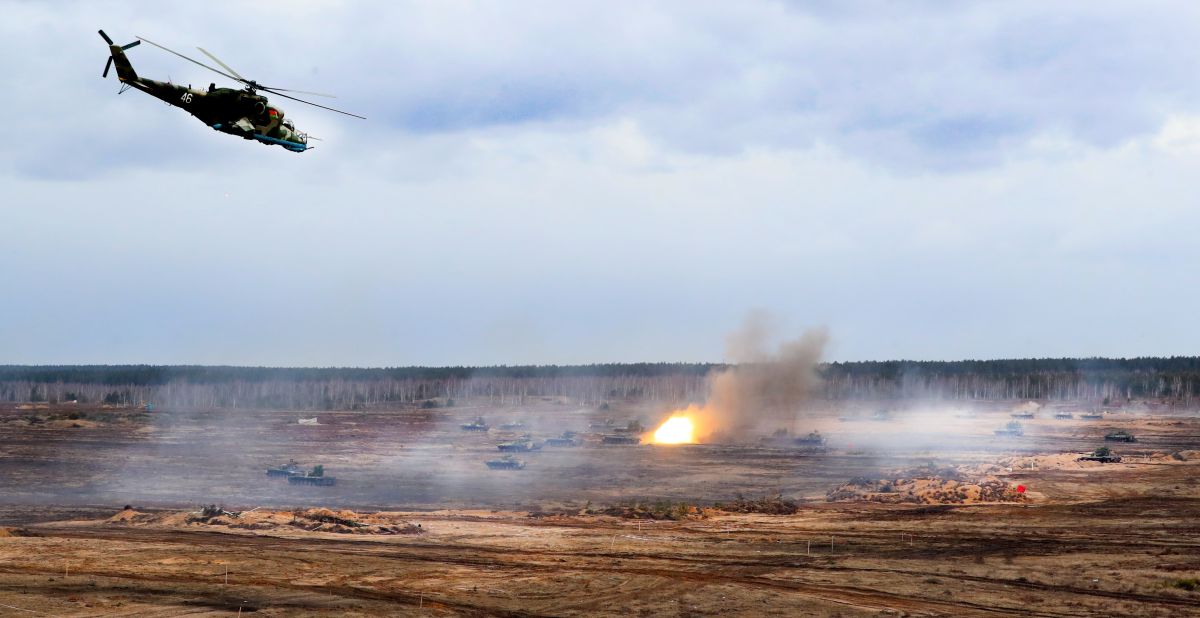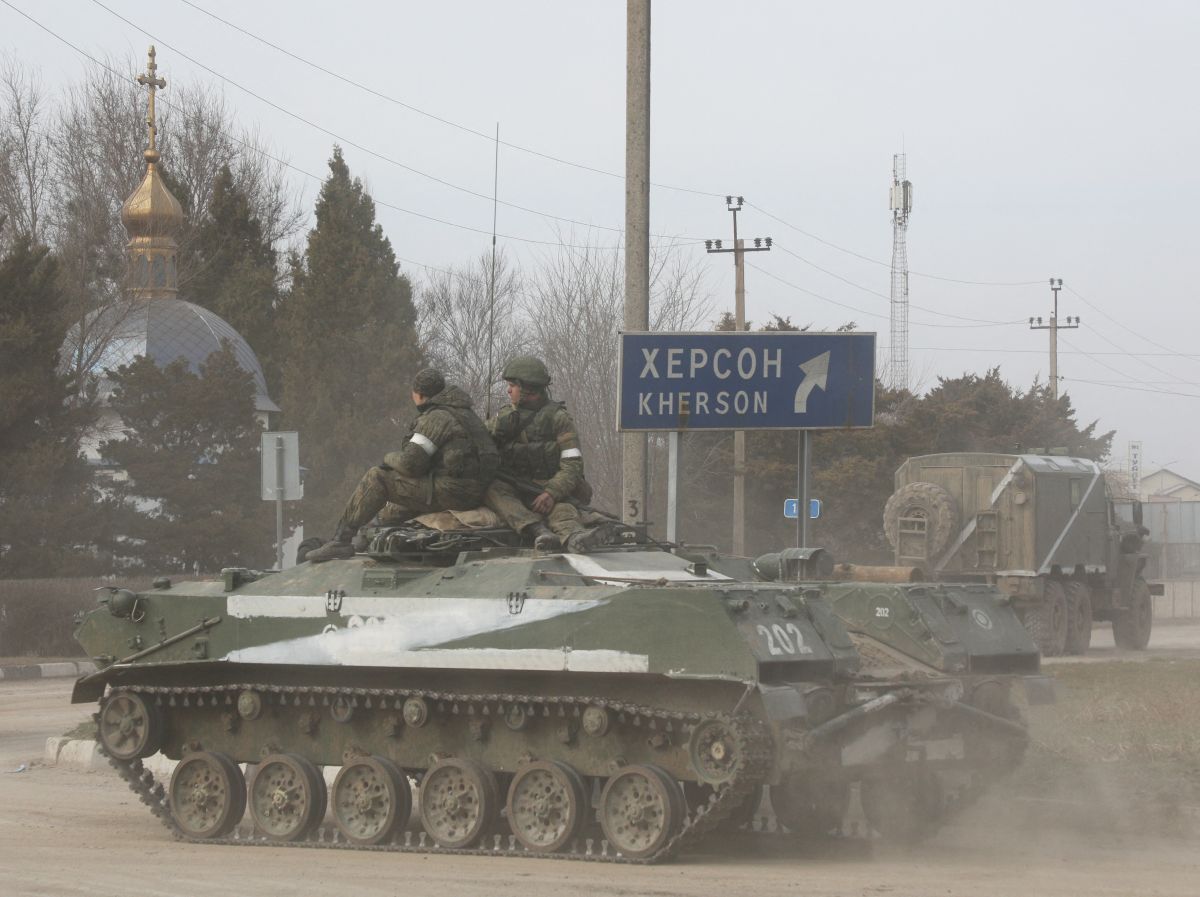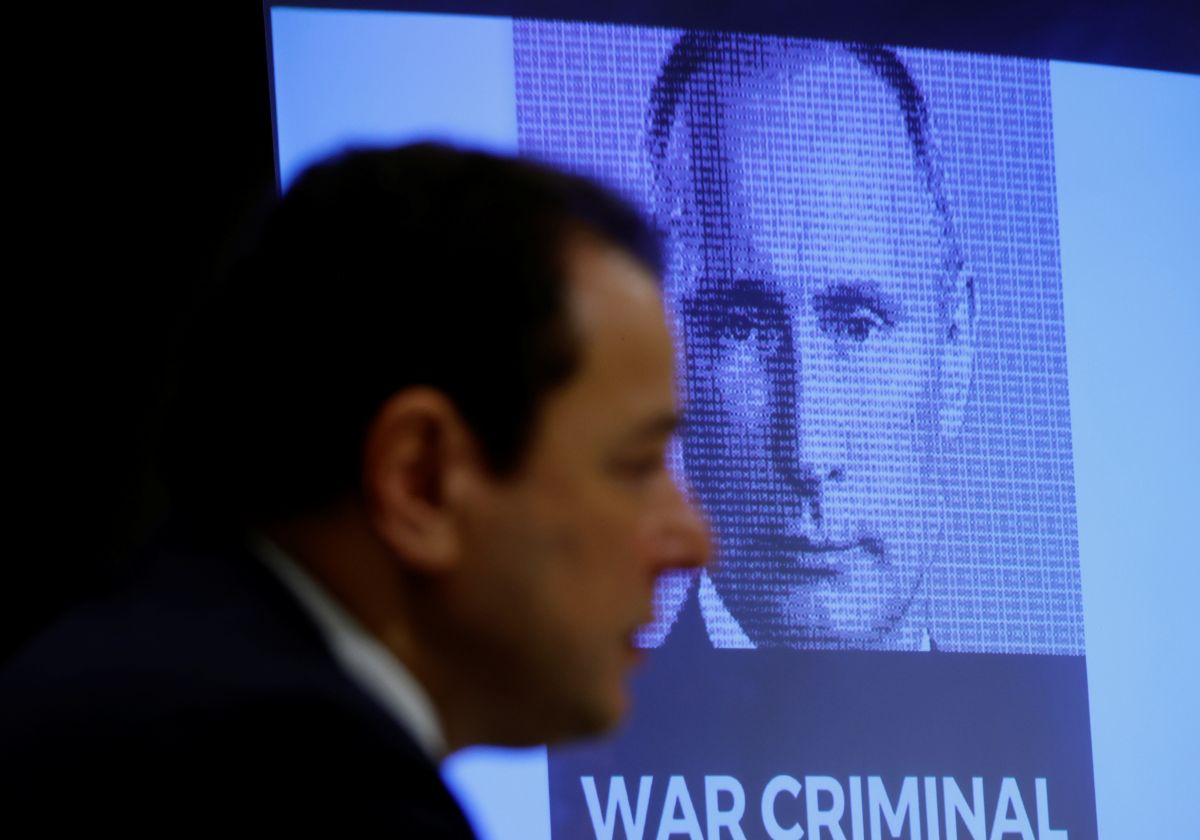NATO Reacts to Russia's Invasion of Ukraine
 YVES HERMAN/Reuters/Forum
YVES HERMAN/Reuters/Forum
What is the main message from the NATO summit?
Alliance leaders condemned Russia for its aggression and Belarus for enabling it (since the invasion partly commenced from Belarusian territory). They announced that they would draw conclusions from Russia’s actions for NATO’s deterrence and defence posture and would protect its members. They will also continue to provide Ukraine with support, which is mainly taking place outside of the NATO framework (and includes mostly sanctions on Russia and deliveries of arms and equipment to Ukraine by individual members), although the whole Alliance is enhancing its cooperation with Ukraine on cyberdefence. The leaders also stressed that Russia has violated a number of its commitments, including those from the 1997 NATO-Russia Founding Act, and has repeatedly rejected offers of dialogue with NATO and its members.
NATO had earlier offered Russia dialogue on arms control, military transparency, and reducing the risk of military incidents and their escalation. The Alliance rejected demands from December 2021 to grant Russia a number of “security guarantees” (including the withdrawal of allied forces from the Eastern Flank and ending military cooperation with Ukraine, and an end to NATO enlargement) as they were contrary to the fundamental principles of NATO’s functioning, the sovereign equality of states, and other principles of European security.
What forces are to be deployed and for what purpose?
Alliance nations are to deploy elements of the NATO Response Force (NRF) to the Eastern Flank, although they have not yet specified the locations and scale of the deployments. The NRF is a multinational rapid-response force of three brigades of land forces with various levels of readiness (with the ability to deploy in timeframes of 5-7, 30, and 45 days) and other types of forces. It amounts altogether to around 40,000 troops, mostly from European countries. Since the end of 2021, the Allies have been raising the NRF readiness level and committing additional forces to it. There will certainly be a deployment of parts of the Very High Readiness Joint Task Force (VJTF), an NRF component which is currently led by France. The day before the summit, the U.S. announced that it will send additional troops to Germany—an armoured brigade with support units with around 7,000 troops in total—which might be deployed later to other countries.
The deployments of additional NATO forces are in practice meant to underscore the unity of the Alliance, show that it will not be intimidated, and enhance its deterrence and defence abilities. While Russia is currently focused on invading Ukraine, it has also increased its military presence and activity along NATO borders and threatened its members and partners (most recently Finland and Sweden). Russia is attempting to coerce NATO and EU nations into cutting support for Ukraine and agreeing the Russian demands. The increased forward presence of NATO forces should be understood as a warning to Russia not to resort to dangerous provocations towards the Alliance that could lead to military escalation.
What was NATO’s military response before the invasion as Russia stoked the crisis?
Since the beginning of 2022, the Allies have taken a number of actions to enhance deterrence and defence against Russia. Strengthening multinational battle groups in the Baltic states from nearly 4,000 to around 6,000 troops has been under way. France is also to lead a new battle group in Romania. There are around 100 aircraft on heightened alert in Europe, policing of the airspace over the Baltic States, Bulgaria, and Romania has been strengthened, and there are more than 120 allied ships operating in European waters. NATO and member aircraft have been conducting intensive surveillance flights along the Alliance’s eastern borders. On a bilateral basis, the U.S. has doubled its military presence in Poland (to around 9,000 troops) by deploying troops from American territory. It has also moved a number of forces within Europe, including sending 1,000 troops to Romania and 800 to the Baltic states.
What long-term challenges does the Russian aggression pose to NATO?
The escalated Russian aggression against Ukraine confirms President Vladimir Putin’s determination to create a sphere of influence and to attain it through greater use of force by taking ever increasing risks. Moreover, NATO must consider that Russia will be able to attack its members with less warning than expected so far. These are already the implications of Russia’s subordination of Belarus, which has recently accelerated the integration of its military with Russia. The further presence of Russian troops and/or equipment in Belarus and improvement of infrastructure to receive reinforcements will facilitate potential attacks on Poland and cutting off the Baltic states from the rest of NATO. NATO’s security environment will degrade further if Russia seizes Ukrainian territory near the borders of Alliance countries. This would create new directions of potential aggression against the Alliance, which could take place along a greater length of the Polish border and also be directed at Romania, Slovakia, and Hungary.
What can further NATO discussions be about?
While most of the recently announced deployments to the Eastern Flank are considered interim responses to the recent Russian aggression and threats, Russia’s actions make the case for an enduring strengthening of deterrence and defence. This pertains to both the potential of NATO flank countries and other allies, including an increase in allied military presence on the Eastern Flank, the deployment of additional types of capabilities there (such as long-range conventional missiles), and shortening the time necessary to deploy additional reinforcements in a crisis.
The NATO-Russia Founding Act should not be treated as an obstacle for further NATO adaptation. Given the repeated violations of the terms of this document by Russia, the Alliance should no longer feel bound by the self-constraints enshrined in the act, including declarations not to deploy “substantial” combat forces on a permanent basis near Russia. For years, however, a number of allies have objected to calls for NATO to abandon the Founding Act, fearing that it would be provocative towards Russia and would make dialogue with that country more difficult.
The U.S. has so far made the biggest contribution to strengthening the allied military presence on the Eastern Flank, but given its competition with China in the Indo-Pacific, it will undoubtedly continue to strongly call for the increased involvement of European allies in enhancing deterrence and defence against Russia. Long-term decisions about this adaptation should come from the NATO summit in Madrid in June when the Alliance is to adopt a new strategic concept.


